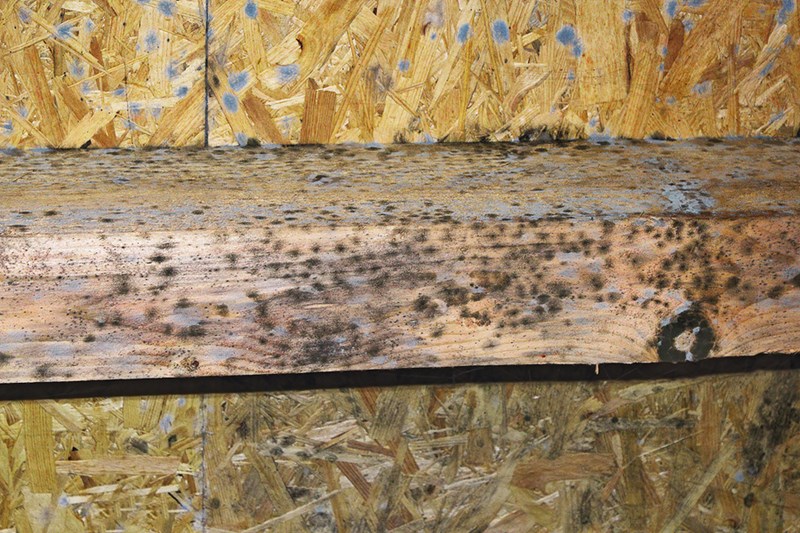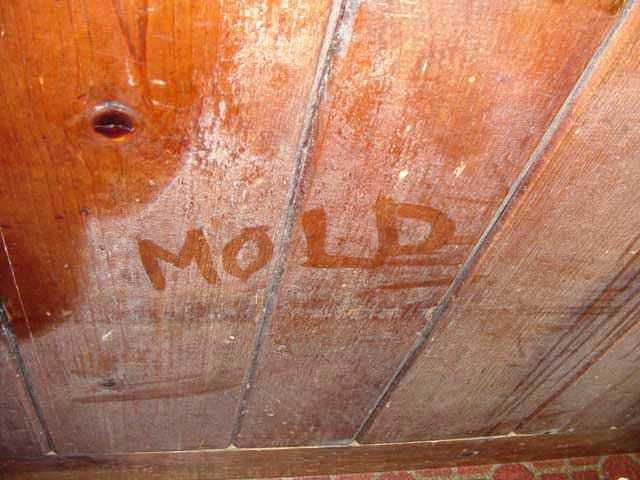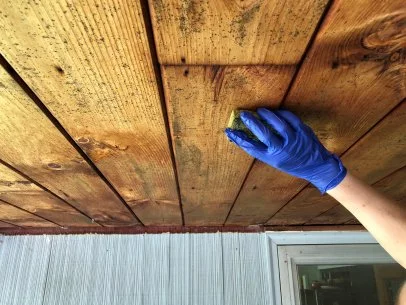
What Causes Mold to Grow on Wood?
Mold thrives in damp, humid environments, and wood is especially susceptible to mold growth due to its porous nature. Leaks, high humidity, and flooding can all create the perfect conditions for mold to develop on wood. According to the EPA, mold can cause a range of health issues, from allergic reactions to respiratory problems, making it essential to address any mold growth as soon as possible.
How to Kill Mold on Wood
Removing mold from wood surfaces requires a careful approach to ensure the wood isn’t damaged during the cleaning process. Follow these steps to effectively kill mold on wood:
| Step | How to Do It |
|---|---|
| 1. Wear Protective Gear | Before you start cleaning, protect yourself by wearing gloves, a mask, and safety goggles. Mold spores can become airborne and pose health risks when disturbed. For more safety tips, refer to CDC’s mold cleanup recommendations. |
| 2. Dry the Wood Surface | Use fans or a dehumidifier to dry the wood surface. Mold cannot grow without moisture, so ensuring the wood is dry before cleaning will help prevent further spread. |
| 3. Vacuum the Area | Use a HEPA vacuum to remove loose mold spores from the surface. A HEPA vacuum is designed to trap tiny particles like mold spores, preventing them from being released back into the air. This is an essential step for keeping mold spores contained. |
| 4. Clean the Mold with a Solution | Create a cleaning solution using equal parts white vinegar and water. White vinegar is a natural mold killer and safe for wood surfaces. Apply the solution to the affected area with a spray bottle and let it sit for about 10-15 minutes to break down the mold. |
| 5. Scrub the Mold Away | Use a soft brush or sponge to gently scrub the mold off the wood surface. Be careful not to scrub too hard, as this can damage the wood. For stubborn mold spots, you can add a small amount of baking soda to your cleaning solution for extra scrubbing power. |
| 6. Wipe and Dry | Once the mold is removed, wipe down the area with a clean, damp cloth to remove any remaining residue. Be sure to dry the surface completely with a towel to prevent moisture from seeping back into the wood. |
If mold continues to reappear, it could be a sign of a more serious moisture problem. In such cases, it’s best to seek professional help from Citywide Mold Mitigation for thorough inspection and mold remediation services.
How to Prevent Mold from Returning

After successfully removing mold from wood, it’s crucial to take steps to prevent it from coming back. Mold thrives in environments where there’s moisture, so controlling humidity and keeping wood surfaces dry is key. Here are some tips to prevent future mold growth:
1. Control Humidity Levels
Keeping humidity levels in your home below 50% will help prevent mold growth. Use a dehumidifier in areas prone to dampness, like basements or bathrooms, to control moisture. For more tips on reducing humidity in your home, check out this guide from the U.S. Department of Energy.
2. Improve Ventilation
Proper ventilation is key to preventing mold. Ensure that rooms with wood surfaces, such as kitchens, bathrooms, or basements, are well-ventilated. Installing exhaust fans or opening windows can help reduce moisture buildup.
3. Fix Leaks Promptly
Leaks in roofs, plumbing, or windows can lead to moisture seeping into wood surfaces, creating the perfect conditions for mold growth. Repair any leaks immediately to prevent mold from taking hold. You can find more advice on water damage prevention at FloodSmart.gov, the official website of the National Flood Insurance Program.
4. Use Mold-Resistant Products
Consider using mold-resistant paints or sealants on wood surfaces, especially in areas prone to moisture. These products create a protective barrier that helps prevent mold from growing on the wood.
When to Call Citywide Mold Mitigation for Help

While DIY methods can be effective for small areas of mold on wood, larger mold infestations or mold that has penetrated deep into the wood may require professional remediation. Mold can spread quickly, and if not properly treated, it can lead to more extensive damage to your home.
If you’re dealing with a persistent mold problem or need help with mold removal, Citywide Mold Mitigation offers expert services to ensure your home is mold-free. Our team of professionals uses advanced techniques to remove mold safely and prevent it from returning. Contact us today for a free consultation.
FAQ
| Question | Answer |
|---|---|
| What is the best cleaner for mold on wood? | White vinegar is one of the most effective natural mold killers for wood. It’s safe for most wood surfaces and kills a majority of mold species. Baking soda can also be used for tougher spots. |
| Can mold grow back on wood after cleaning? | Yes, mold can return if the wood remains damp or if the humidity levels in the room are high. Properly drying the wood and controlling moisture will help prevent mold from coming back. |
| Does mold on wood cause health problems? | Mold can cause a variety of health issues, including respiratory problems, allergies, and skin irritation. It’s important to address mold growth promptly to protect your health. |
| Should I use bleach to clean mold on wood? | While bleach can kill surface mold, it may not be effective at killing mold spores that have penetrated deep into the wood. Vinegar and hydrogen peroxide are safer and more effective alternatives for wood surfaces. |
| When should I call a professional for mold removal? | If mold covers a large area (more than 10 square feet), has penetrated deep into the wood, or continues to return after cleaning, it’s best to call a professional mold removal service like Citywide Mold Mitigation. |
If you need professional help with mold removal, contact Citywide Mold Mitigation for expert service. Our team is ready to assess and remove mold from your home to keep you and your family safe.

